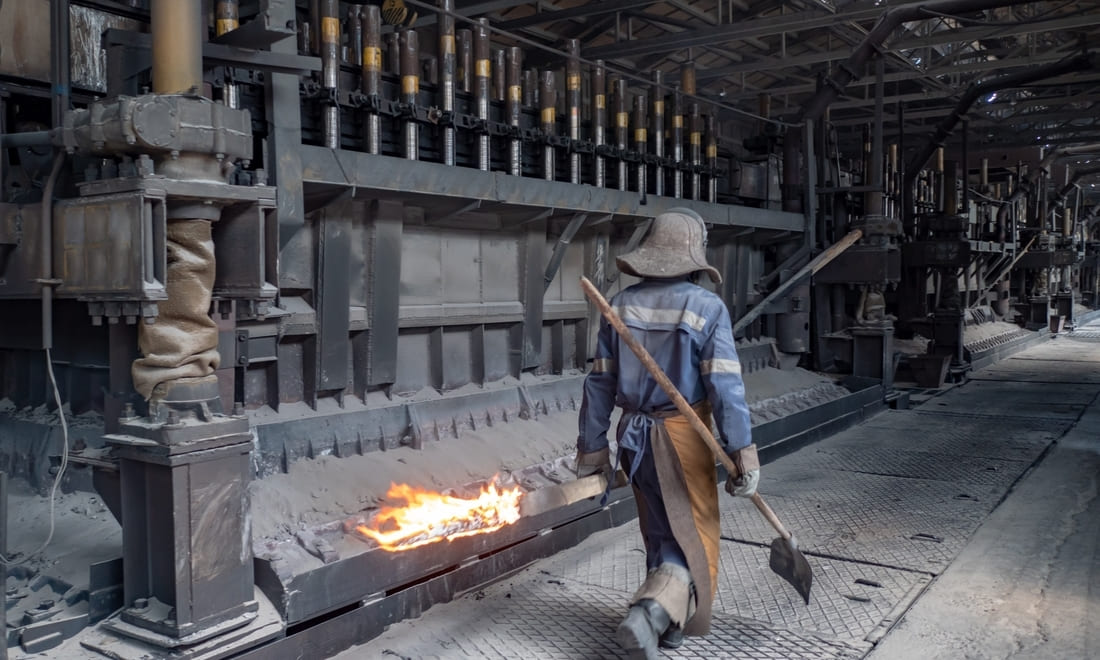Recent events have thrown global metal supply chains into chaos. Aluminum shortages have been an ongoing issue over the last two years, and unfortunately, aluminum supply chain issues don’t appear to be getting better any time soon.
China’s zero-COVID policy continues to prolong the economic effects of the pandemic. Ports and warehouses are locked down, backing up freight coming in and out of the country. Container ships are waiting for days at the world’s largest port in Shanghai. Meanwhile, an ongoing energy crisis in the country continues to limit production and shut down smelters.
On top of all this, Russia has compounded aluminum supply chain issues with its invasion of Ukraine. Both countries are important players in the global aluminum supply chain.
None of this looks good for the future of aluminum supplies. Fortunately, there are ways to avoid the congested global supply chain with alternative sources. We’ll talk about these as well as look at how events in China and Russia are impacting the supply chain and how we expect aluminum supply chain issues to evolve through 2022.
Energy and Magnesium Shortages in China
China is incredibly important to the aluminum supply chain, producing more than half the world’s aluminum and 89 percent of the world’s magnesium—a critical element in most aluminum alloys. Most of China’s magnesium is produced in the world’s largest magnesium production hub, Shaanxi province, where production has been throttled to meet energy efficiency targets. As a result, magnesium prices have reached record highs and are certain to continue creating aluminum supply chain issues.
China is currently experiencing an energy crisis that has been ongoing since September 2021. Energy demand dropped sharply in 2020 during the pandemic, causing fuel production and prices to fall. In addition, last winter was unusually cold in China, depleting coal and gas stockpiles. Energy demand rebounded in 2021, but the supply struggled to ramp up to meet it, leading to a shortage and price increases. Now, soaring coal costs, exacerbated by a ban on Australian coal, have driven China into a major power crunch.
The energy crisis has affected industries across China, hitting aluminum production especially hard. Blackouts and energy efficiency restrictions have turned China, the world’s largest aluminum producer by far, into a net importer of unwrought aluminum. We can expect to see aluminum prices continue to rise as China’s industry struggles to meet demand.
Aluminum Supply Chain Issues in Russia
As if the pandemic, the energy crunch, and factory and port closures in East Asia aren’t enough, the world is now dealing with a crisis on another continent: the war in Ukraine. This conflict has already begun to upset supply chains in Europe and is likely to compound aluminum supply chain issues in particular as the U.S. and its allies cut off Russian fuel and materials.
China may be first in global aluminum production, but Russia is second, accounting for about 6 percent of global supply. Although Russia’s aluminum industry has not been sanctioned, many companies are refusing to do business with Russia and are actively working to build Russian aluminum out of their supply chains. Container shipping lines have stopped calling at Russian ports, and banks worldwide are unwilling to finance new purchases of Russian metals.
And it’s not just the demand side—Australia, for example, has banned the export of aluminum ores to Russia to hamper its production. Considering Russia’s top two suppliers of aluminum ore were previously Ukraine and Australia, Russian aluminum production will have a very hard time recovering.
The impact of the loss of Russian aluminum is a serious disruption for Europe. Former buyers of Russian aluminum now must find alternative sources, and these sources tend to be far away and require sea transportation, such as China, whose economy is already reeling. The European Union has also banned imports of Russian coal, impacting smelter production that has already been falling because of high energy prices.
Avoid Aluminum Supply Chain Issues with a Reliable U.S. Supplier
Fortunately, there’s a better alternative to deal with these aluminum supply chain issues: recycling. Recycling aluminum saves energy, money, and resources compared to creating new materials. Using recycled aluminum in manufacturing processes can bring down costs.
One of the most efficient ways to recycle steel and aluminum is by using remnant metal left over from large-scale manufacturing processes. These remnants can be easily reused by fabricators who need smaller pieces of aluminum. Sourcing verified aluminum remnants from a U.S. supplier is a great way to mitigate aluminum supply chain issues.
At Industrial Metal Service, we specialize in recycling and supplying remnant metals such as aluminum, steel, copper, and titanium. We have more than two decades of experience working with machine shops, fabricators, and manufacturers in the San Francisco Bay Area and nationally.
Contact Us
 Cast Plate
Cast Plate Sheet
Sheet Plate
Plate Rectangular Bar
Rectangular Bar Flat Bar
Flat Bar Square Bar
Square Bar Round Bar
Round Bar Diamond Plate
Diamond Plate Angle
Angle Channel
Channel Rectangular Tubing
Rectangular Tubing Square Tubing
Square Tubing Round Tubing
Round Tubing Pipe
Pipe Sheet
Sheet Plate
Plate Flat bar
Flat bar Diamond Plate
Diamond Plate Angle
Angle Channel
Channel Rectangular tubing
Rectangular tubing Square tubing
Square tubing Round tubing
Round tubing I Beam
I Beam Sheet
Sheet Plate
Plate Rectangular Bar
Rectangular Bar Square Bar
Square Bar Round Bar
Round Bar Rectangular Tubing
Rectangular Tubing Square Tubing
Square Tubing Round Tubing
Round Tubing Square Bar
Square Bar Angle
Angle Round Plate with Drophole
Round Plate with Drophole Round Bar
Round Bar Flat Bar
Flat Bar Plate
Plate Round Bar
Round Bar
